Current Project and Interests
- Metal hydride
- Superadiabatic Thermal Wave
- Sustainable / Smart Infrastructure
- Nondestructive Testing / Structural Health Monitoring / Damage Assessment
- Sensor Development /Advanced Sensing Application
- Visualization technique: Image Processing, Image Reconstruction Algorithm
- Automated inspection on Infrastructures: bridge, building, pavement, rail, and runway
Highly Efficient Heat Pump and Metal Hydride Thermochemistry
Metal Hydride Heat Pump: The dual metal hydride system can operate flexibly in three distinct thermodynamic cycles: cooling, heat pumping, and converting low-grade heat to high-grade heat (heat upgrade cycle), which is unique to this metal hydride heat pump system because these cycles occur in the single system. This implies the system can be greatly modified by adjusting the metal hydride pair with different thermodynamic properties (e.g., enthalpy and entropy) and thus leveraging the metal/hydrogen interaction characteristics, which makes it possible to respond to various input waste-heat temperature sources. It does not require any harmful chemicals.
The left figure shows a typical cooling/heat pump cycle of an arbitrary dual metal hydride pair contained in two reactors. By introducing an external heat source Q to a high-temperature hydride reactor (HThyd), metal hydride 1 (Me1) is heated and releases hydrogen (endotherm). The hydrogen is then migrated to the other low-temperature hydride reactor (LThyd) with metal hydride 2 (Me2) which absorbs the hydrogen and releases heat (exotherm). When HThyd reactor is cut from the heat source and returned to ambient temperature (TA) condition and LThyd reactor is placed in a low temperature (TB), hydrogen is again migrated back to HThyd reactor due to its lower equilibrium pressure, leaving LThyd reactor in endothermic condition as an induced cooling effect, and completing its single cycle. The endothermic reaction at LThyd reactor is a base of cooling and heat pump effect.

Thermodynamic cycle of an arbitrary metal hydride pair contained in two reactors. 1→2 and 3→4 show the equilibrium pressure and temperature changes in each reactor. 2→3 and 4→1 show the hydrogen migration between the reactors with relevant endotherm and exotherm
 | 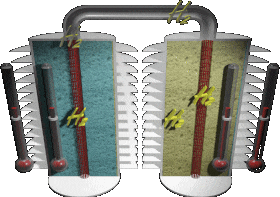 |
 |  |
Fully Contactless Damage Assessment of Infrastructures

Autonomous and Rapid Bridge Inspection System for Internal Damage

The techniques provide an effective non-destructive approach to evaluate concrete structures, but we need rapid and non-obtrusive data collection and accurate interpretation to enable effective and meaningful application to the infrastructure.
The objectives of this effort are:
- Develop rapid (moving test platform) approach to detect near-surface delaminations in concrete bridge decks
- Investigate feasibility of air-launched stress waves for this purpose
https://www.uta.edu/news/news-releases/2019/12/18/better-bridge-inspections
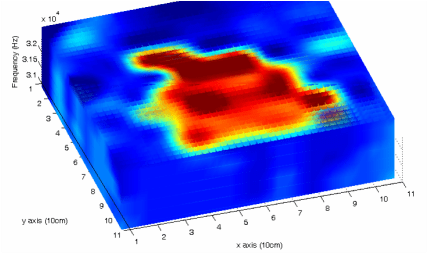
3-D image of experiment results indicate internal defect (delamination) in the bridgedeck. The wave interpretation of air-coupled seeing data can distinguish delaminated regions of concrete. Multiple mechanical wave data can be used accurately image delamination position. The method shows promise for rapid and effective bridge deck evaluation. The dispersion data were assembled to give the 3D image
Autonomous and Rapid Bridge Inspection System for Internal Damage

Develop a sensitive NDT test approach for cost-effective inspection.
- Multi-sensor MEMS array receivers provide consistent data from rail tie structures.
- Advanced post-processing analysis allows for clear distinctions between RSD damage levels
- The large offset (250mm liftoff distance from surface) testing configuration provides some ability to detect among different damage levels with moving (Real-time scanning).
Incoherent Backscattering Energy Approach to Characterize Internal Microcracking Damage in Concrete (In-situ measurement)

Air-launched ultrasonic surface backscatter data provide distinction between different extents of distributed microcracking damage in concrete. Data from conventional forward propagating coherent pulse analysis are not able to distinguish the damage states.

From microcracks to macrocrack, the technique allows very sensitivity to with 95% confidence leveled statistically difference

The contactless ultrasonic testing approach that uses backscatter measurements to characterize distributed cracking damage in concrete structures. Conventional NDE systems indicate relative value, poor sensitivity, have potentially slow speed measurements. Efforts to overcome both issues by employing rapid ultrasonic incoherent backscatter phenomena are introduced here. This technique
* allows in situ measurement (absolute value),
* allows characterization of sub-wavelength sized defects is possible with ultrasonic surface wave backscatter field data.
* Other tech. are not able to distinguish those same damage states.
has the potential for increased sensitivity to small (relative to ultrasonic wavelength) crack defects in concrete
Sensor Development
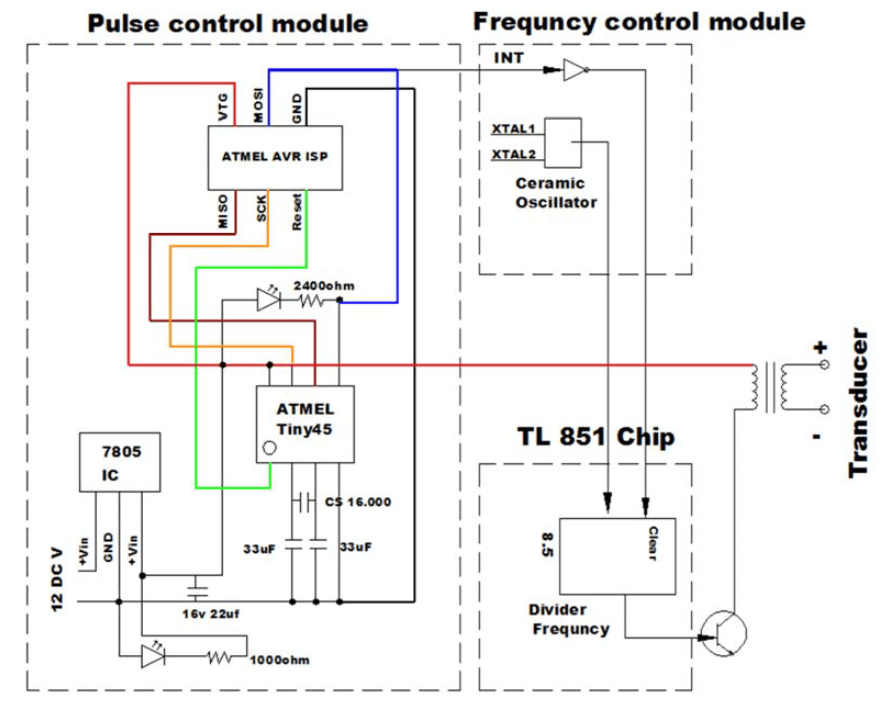
The module allows bandwidth and frequency control by a specific ceramic resonator. The ceramic resonator controls the central frequency of the capacitive transducer between 30 and 80 kHz. The microchip in the module controls pulse duration. The main microchip (generic microcontroller) for the pulse control is the ATMEL Tiny45, which is controlled with an open-source code communicating with a computer through the AVR ISP connector as shown Figure . The 7805 IC regulator in the module maintains a stable and constant voltage level, reducing the electric noise in the built-in commercial module. Module A is simple and easy to construct, although the pulse duration must be at least 10 cycles long owing to limited sampling resolution of the microchip. Thus it is ideal for tone burst signals at a selected central frequency.
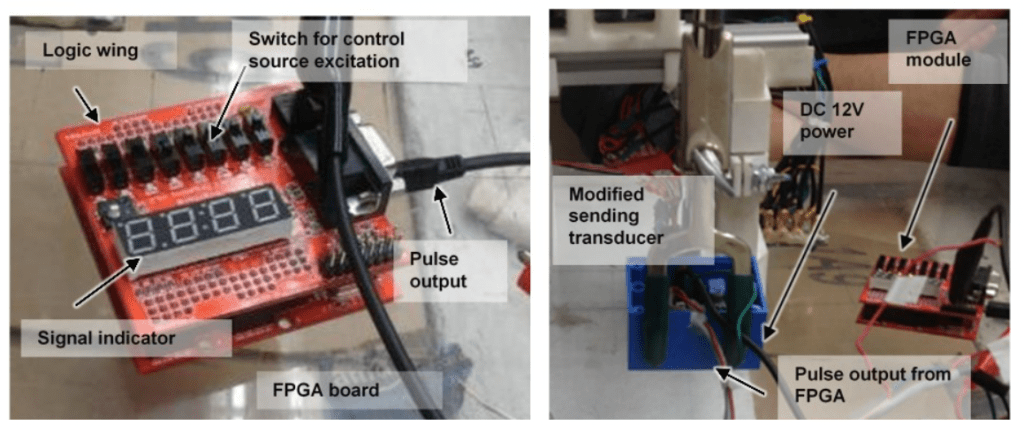
It generates arbitrary electrical excitation signals. A generic microcontroller, such as a single–board microcontroller or PIC (Peripheral interface controller), cannot create high frequency arbitrary waves having very low sampling rate, and as such are unsuitable for our purposes. Rather, field-programmable-gate-arrays (FPGA) shown in Figure are used to generate the arbitrary signal. FPGA operate using customizable logic gates instead of writing instruction sets to the board, like a microcontroller does. The Module B FPGA uses a Papilio One board with a Spartan 3E FPGA chip. Logic gates exhibit very fast response times, in the order of nanoseconds; this is sufficient to create arbitrary pulses up to a frequency of 200 kHz. Furthermore, it is easily programmed so any waveform can be produced. Programming is carried out using Xilinx’s ISE Design Suite. Although the module is more complicated in its design, it is suitable for generating arbitrary waves and chirp signals. The FPGA out signal connected to BJT in circuitry board of modified sending transducer
Auto-scanning system
Concrete temperature match-curing project
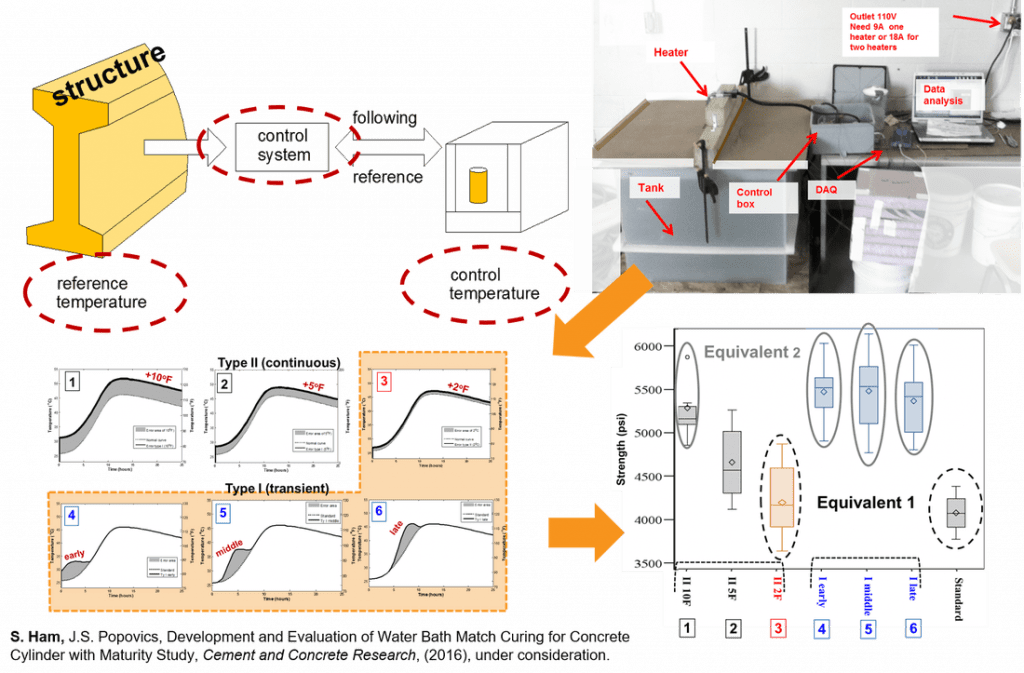
Automated Chain Drag Testing
